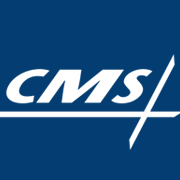CMS: Bundled Payments Model Will Decrease Medicare Spending
The Bundled Payments for Care Improvement initiative can further decrease Medicare spending on specific episodes of care, the federal agency claims.

- The Bundled Payments for Care Improvement initiative has the potential to significantly reduce Medicare spending on 11 of 15 clinical episode groups that were analyzed in the program’s second annual evaluation report.

In an official CMS blog post, Acting Principal Deputy Administrator and Chief Medical Officer Patrick Conway, MD, touted the progress of second and fourth tracks of the bundled payment program. According to CMS, the participants demonstrated reduced healthcare costs and better quality of care for several clinical episodes, including orthopedic surgery.
“Early results are encouraging: orthopedic surgery bundles, in particular, have shown promising results on cost and quality in the first two years of the initiative,” wrote Conway. “These models keep the patient at the center of care delivery and focus on well-coordinated, high quality care.”
CMS reports indicate that hospitals participating in model two of the initiative decreased healthcare costs by $864 per orthopedic surgery episode. Hospitals were also able to improve quality of orthopedic surgeries. Beneficiaries reported better patient outcomes after 90-days post-discharge in two mobility measures.
Hospitals in Model 2 also maintained quality of care for cardiovascular surgeries, Conway observed. However, the participants were not able to realize any healthcare savings for the episode of care.
The Affordable Care Act granted CMS the authority to establish the Bundled Payments for Care Improvement initiative to test if connecting Medicare payments to episodes of care would decrease healthcare costs while maintaining or improving quality of care. The initiative currently reimburses providers for 48 clinical episodes of care.
Through the initiative, participating providers are reimbursed based on one of four payment tracks. While the first model in the program pays providers a discounted amount for the inpatient stay in an acute care hospital, the remaining models reimburse participants for varying levels of care beyond the initial admission.
In Models 2 and 3, CMS pays providers a retrospective bundled payment in which actual healthcare spending for the episode of care is reconciled against a target price. Providers in Model 4 receive a single prospective bundled payment that covers all the services furnished during the episode of care.
More than 1,400 providers currently participate in some form of bundled payments model through the Bundled Payments for Care Improvement initiative, CMS reported.
The federal agency also manages the Comprehensive Care for Joint Replacement Model that was launched earlier this year to reduce healthcare costs associated with hip and knee replacements. The model is expected to save Medicare approximately $343 million, according to the Boston Globe.
“Bundled payments — including the ongoing Comprehensive Care for Joint Replacement Model — continue to be an integral part of transforming our healthcare system by creating innovative care delivery models that support hospitals, doctors, and other providers in their efforts to deliver better care for patients while spending taxpayer dollars more wisely,” Conway insisted.
Stemming from the successes of both programs, CMS proposed new bundled payment models in July that would cover heart attacks, heart bypass surgeries, and hip fracture surgeries. The proposed programs would also qualify for financial incentives under the Quality Payment Program's Advanced Alternative Payment Model (APM) reimbursement track.
The federal agency intends for the bundled payment models to promote better care coordination among hospitals, physicians, and other providers as well as reassure beneficiaries that they are receiving high-quality care from admission through recovery.
While many providers have already benefited from public and private bundled payment models, CMS noted, the federal agency expects future evaluation reports to better quantify healthcare savings and quality levels of participants in the Bundled Payments for Care Improvement initiative.
“Future evaluation reports will have greater ability to detect changes in payment and quality due to larger sample sizes and the recent growth in participation of the initiative, which generally is not reflected in this report,” Conway added.
However, the initiative has realized more healthcare savings in the past year compared to the first evaluation. Last year, CMS reported limited healthcare cost reductions among participating hospitals, but providers were able to significantly improve on certain quality measures. Among model two providers, patients discharged to skilled nursing facilities decreased by five percentage points in the first intervention quarter and the share of patients discharged to home healthcare, which are lower cost providers, increased.
The federal agency pointed out that the participating hospitals focused more on building the infrastructure and care delivery processes needed to succeed under the bundled payments initiative rather than reducing healthcare costs.
Dig Deeper:
• Understanding the Basics of Bundled Payments in Healthcare
• How to Overcome the Challenges of Bundled Payment Models
